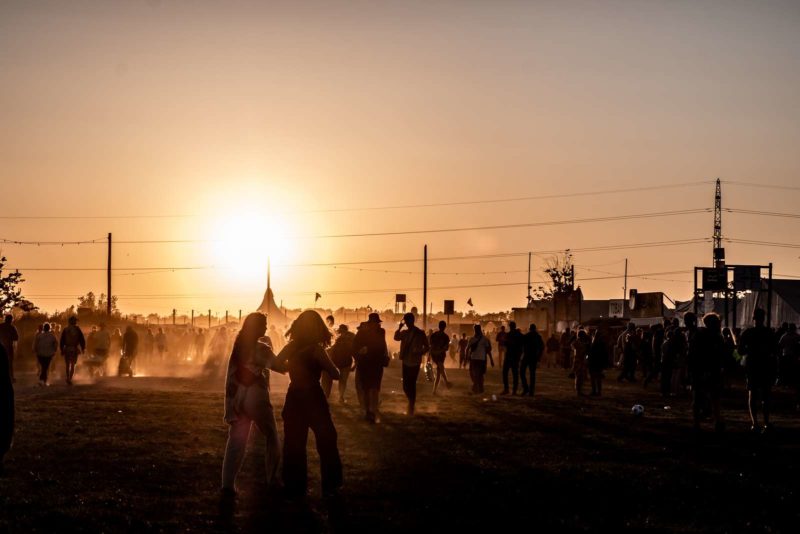Now that the dust has settled (literally, as high winds and fields worn down by high footfall does mean it gets pretty dusty), it’s time to look back on a week in Denmark for Roskilde Festival. Roskilde spends most of the year as a medium-sized town a little outside Copenhagen, but, for its sins, once a year it hosts one of Europe’s biggest and best music festivals. And at the end of June, that’s where we found ourselves, ready to cover the Nordic Talents programme which occupies most of the festival’s first, ‘warm-up’ days.
Two things hit you about the festival if you’re a first-time visitor, like I was. The first thing is the size. Roskilde Festival is enormous, a sprawling zone at over 8km2 and 160,000 visitors, including volunteers. It’s the only festival I’ve ever been to that has its own train station, which sort of operates a Lenin-style sealed-train system that gets the guests to and from the festival while keeping them quarantined from the general public – who knows what trouble they might cause. Step off the Roskilde Express and you land in the middle of the west camping village, which has as its landmark a wind turbine that towers over the festival. Walk through there, across the bridge over the railway line (illuminated at night with a constant river of people in flow over it, it’s one of the more spectacular sights at the festival) and you arrive in the central zone, home to the stages, food areas, east camping village off in the distance and a list of other adventures too long to describe. I never made it from one end of the festival to the other at any point, but I’m sure the walk would have taken at least half an hour. There’s an awful lot of talk about festivals being temporary cities, but Roskilde genuinely feels like it, with an architecture and geographical maze to match.

Roskilde Festival 2019
The other thing that hits you is that Roskilde does genuinely feel like it’s a festival designed to maximise the fun of its attendees. Most festivals have a pretty simple brief – book some big headliners to haul in the crowds, get them into a locked location for a few days, treat them like something between cattle and prisoners of war and try and suck them financially dry. Roskilde, run by the Roskilde Festival Charity Society as a non-profit, and largely staffed by volunteers who work a couple of hours at the festival in exchange for a ticket, does feel like it puts the effort in, by providing things to its visitors that aren’t necessarily profitable, but add to the festival.
You can take for example the wide range of arts and activist talks and events, or even the way the festival is laid out, with tonnes of neat seating and chilling space that isn’t just intended to herd you from bar to burger to stage. You can even just look at the fact the Nordic Talents Programme exists at all – probably very few people are buying Roskilde tickets to see these very new bands, but if you’re at a festival and there’s a show on you’ll probably go, and that means these rising artists play to their biggest audiences yet. And so some people might find a brand new favourite artist. It doesn’t pay in terms of short-term thinking, but it does add to the overall good, and who knows, might aid in the development of a future Roskilde headliner.
But anyway, rambling about the festival isn’t very interesting to anyone, so let’s dive in to the highlights from the Nordic Talents.
1. Hjalte Ross
Hjalte Ross had the honour of opening things up on the Rising Stage on a baking hot Sunday afternoon. So his soft, delicate indie-folk seemed a good choice to warm a close-to-overheating crowd even more up. But Ross was more than gentle background music – his music’s open-heart, and the strings and big band he takes onstage to bring it to life helped sculpt a dreamy, captivating world to escape the heat in.
2. ZAAR
I’ve seen ZAAR a couple of times now, and they always mix things up a little. Sara Flindt’s world of layered, spiralling electronic pop tends to come over more powerfully live in any case, where there’s more space for it to expand, improve and bloom, and here the addition of a choir, with live vocal manipulation, gave the songs more force and power, a wave wall of noise backing Flindt up.
3. Hôy La
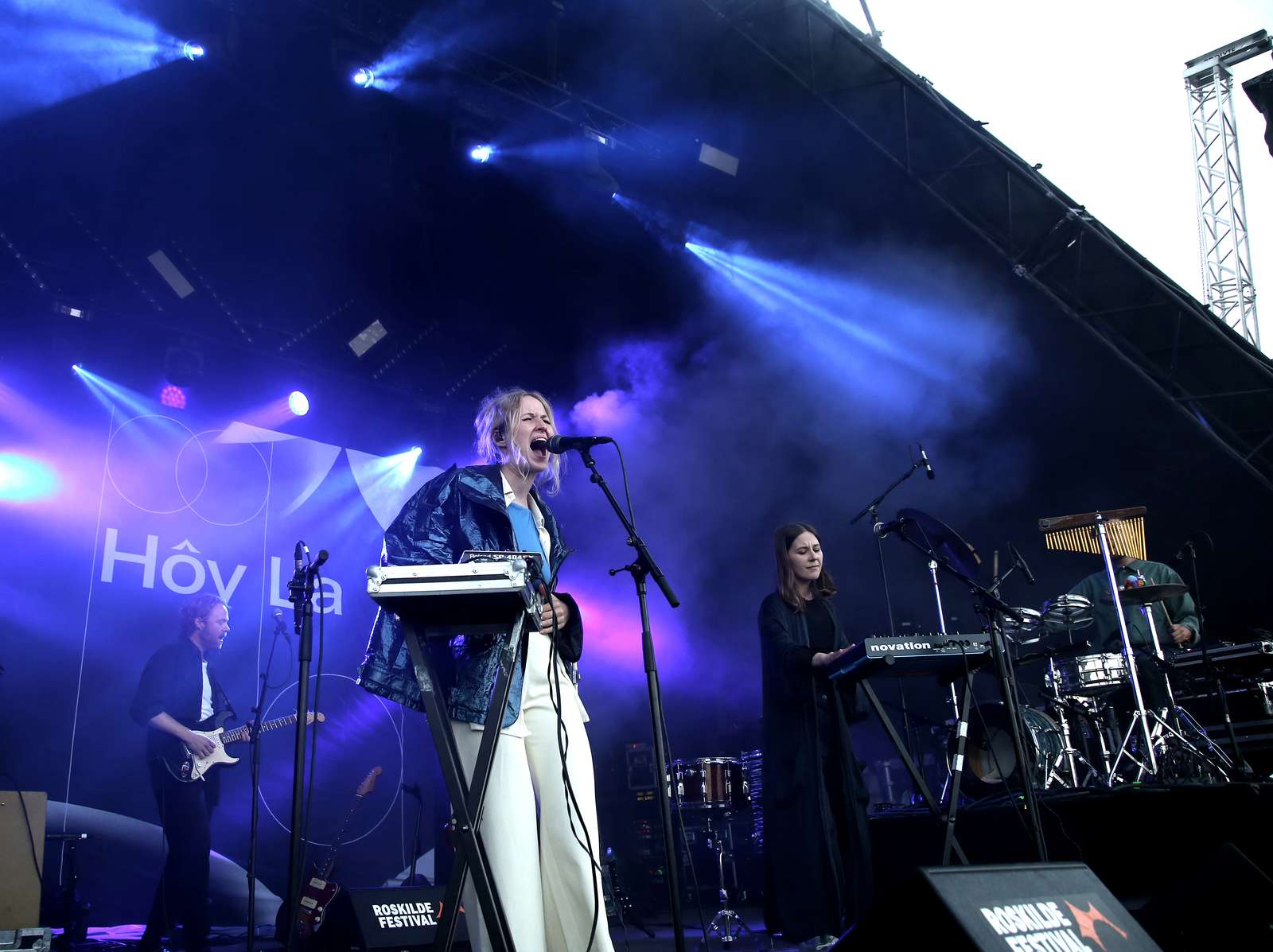
Photo: Kristian Gade
Hôy La’s show coincided with the sun coming down, which was a bonus as it helped tilt the atmosphere more in Ingri Høyland’s direction. The growing darkness added to the menace in the mood of her shadowy trip-pop, and live she makes her music an exercise in mastery of tension and release, teasing the tone and tempo until it bursts in occasional shockwaves of noise and violence.
4. Selma Judith

Photo: Christian Hjorth
Selma Judith made it clear early on what her festival highlight was, emerging onstage armed with only her harp for a cover of headliner Bob Dylan’s One More Cup of Coffee. Her spectacular voice, shifting effortlessly from slowburn to soaring, is in much better shape than Dylan’s these days, and when the full band emerges for the rest of her set it’s that voice that’s at the heart of it all, the shining light of her graceful, minimal R’n’B.
5. Heartbreak Satellite

Photo: Christian Hjorth
A lot of bands try to maintain a serious façade onstage, due to the fear that their music won’t get taken seriously otherwise, but Norway’s artpop supergroup Heartbreak Satellite aren’t afraid to visibly have fun, cracking smiles and jokes with one another as they work their way through their excellent, screwball and snakes’n’ladders synthpop.
6. Linn Koch-Emmery

Photo: Christian Hjorth
Linn Koch-Emmery’s modus operendi is pretty simple – write great, short, sludgy indie rock songs with a mix of shrugged charisma and razor-sharp melodies. Live, she follows that formula pretty closely (apart the slower song Little Feels, which she introduces with a long story about falling off a skateboard and ends up forgetting to actually say the song is about the story). She surfs through a set of some of the best new indie rock gems in just over half an hour.
7. Ea Kaya
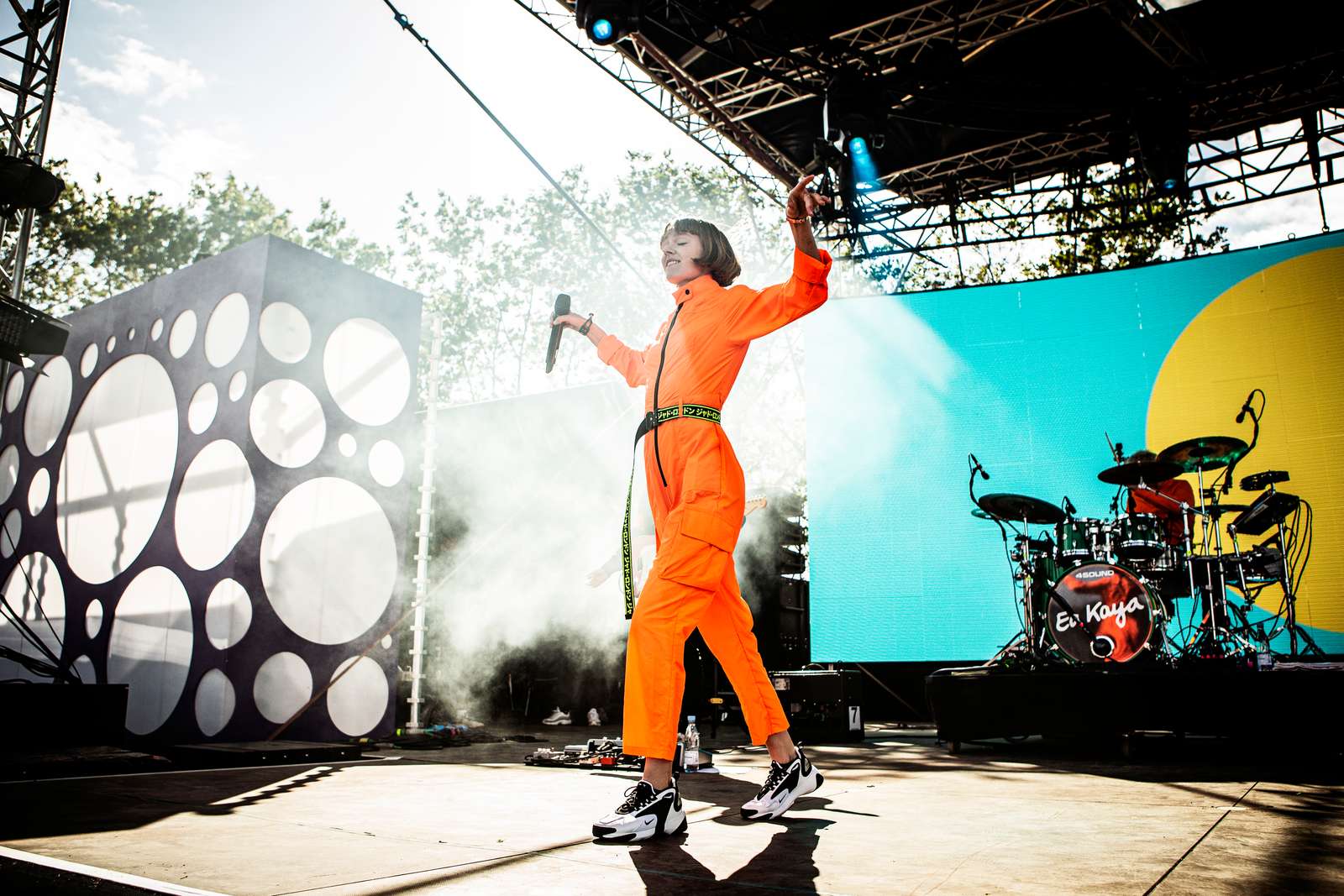
Photo: Christian Hjorth
I came to Ea Kaya’s show in the same way I came to a Sigrid showcase show a few years ego, not really knowing the songs. And Ea Kaya does have a lot of Sigrid energy about her, not so much in the music – her peppy, hyper-infectious pop is entirely her own – but in her energy and stage presence, the way she seems to be having the time of her life up there. She makes the Countdown Stage seem like no bigger a deal than kidding around in front of her bedroom mirror, bouncing around it like she owns it, joking with her band and pulling the audience into the palm of her hand. She wraps things up by sprinting offstage and into the crowd to find volunteers to sing the final chorus with her, for a show they and few others will be forgetting any time soon.
8. Lil Halima

Photo: Steffen Jørgensen (photo.stffn.dk)
“This song is for people in love”, says Lil Halima of her next track, and a guy in the audience spirals a beer like an American football over ten metres and into one of the speakers. Shout out to that guy for both his athleticism and also so he gets through whatever he’s going through, but it doesn’t faze Halima, who proceeds through her set, a mix of hazy modern R’n’B, more funk-inspired numbers (Take Me To Your Planet) and straighter pop (Who Do U Love), all tied together by her smooth, poured honey vocal.
9. Mall Girl
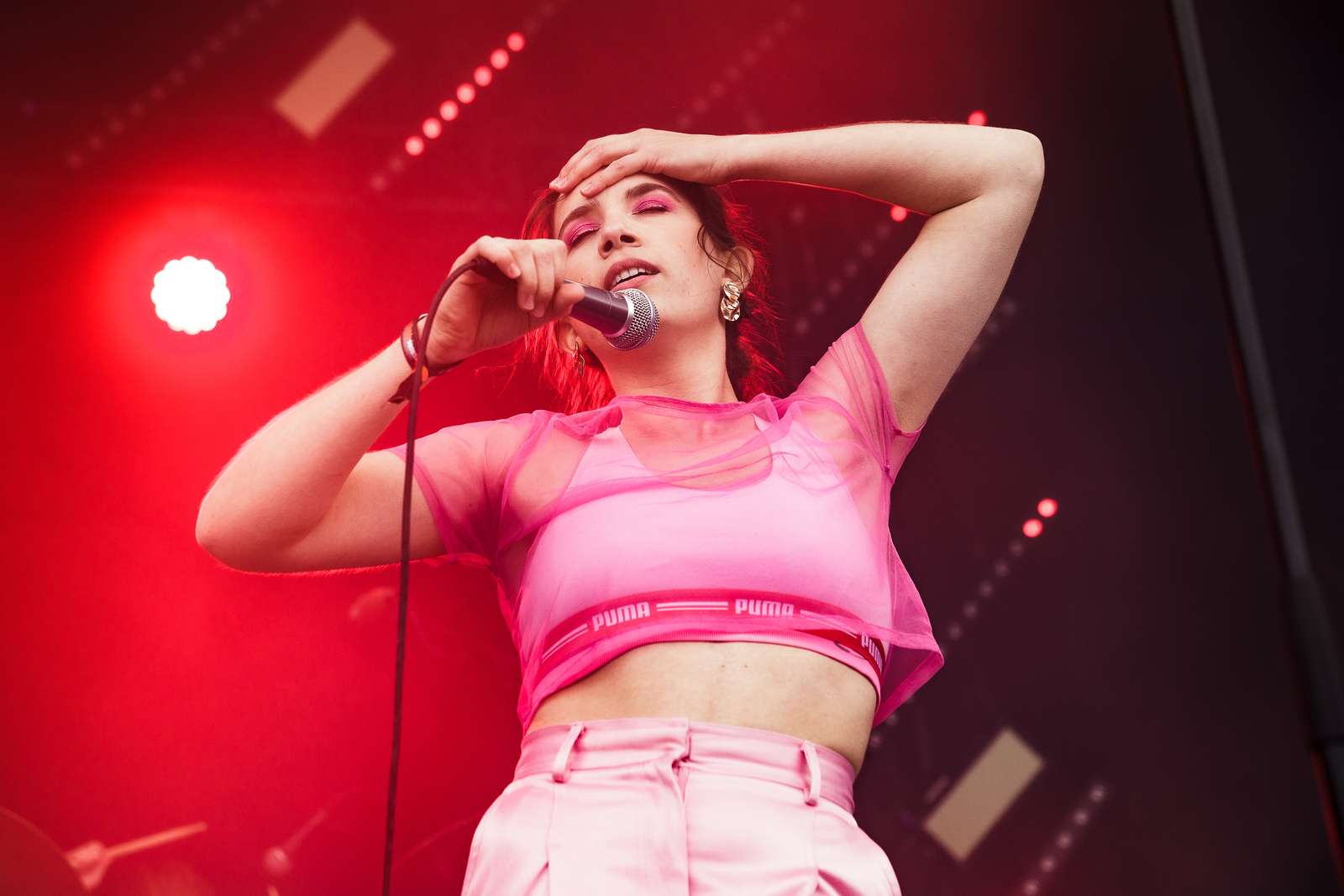
Photo: Peter Troest
Norwegian quartet Mall Girl are another band I’ve seen live a couple of times now, and one consistent theme of their shows is a couple of people seeing the band for the first time being blown away. Mall Girl’s dizzying, acrobatic pop music certainly blows the crowd away here, and even provoke on of the festival’s first mosh pits when they close with single Slay Queen.
10. Boundaries

Photo: Peter Troest
Boundaries have the benefit of standing out amongst the Nordic Talents line-up – there’s not a lot of other bands on it that sound like their tough, muscular rock. As a live act, they expand and synergise the post-punk, industrial and new wave influences on their recorded music, blending it all into a perfect storm of noise, with frontman Mads Grene standing in front of it all as the prophet delivering the brutal romance of songs like Forgiver to the crowd.
Thanks to all at Roskilde Festival 2019.
Photos courtesy of Roskilde Fetstival.
